Testbank ch7 PDF

| Title | Testbank ch7 |
|---|---|
| Author | Mohammad Faqeer |
| Course | management information system |
| Institution | German Jordanian University |
| Pages | 4 |
| File Size | 96.3 KB |
| File Type | |
| Total Downloads | 25 |
| Total Views | 196 |
Summary
Download Testbank ch7 PDF
Description
Smartphones have the same security flaws as other Internet-connected devices.
Definition
TRUE
(True/False)
Term
Definition
TRUE In 2013, the security firm McAfee identified approximately 35,000 kinds of mobile malware. (true/false)
Definition
Term
TRUE
Viruses can be spread through e-mail. (true/false)
Term
Definition
FALSE The term cracker is used to identify a hacker whose specialty is breaking open security systems. (true/false)
Term
Definition
TRUE To secure mobile devices, a company will need to implement special mobile device management software. (true/false)
Term
Definition
TRUE Wireless networks are vulnerable to penetration because radio frequency bands are easy to scan. (true/false)
Term
Definition
TRUE Computer worms spread much more rapidly than computer viruses.
(true/false)
Term
Definition
TRUE One form of spoofing involves forging the return address on an e-mail so that the e-mail message appears to come from someone other than the sender. (true/false)
Term
Definition
TRUE Sniffers enable hackers to steal proprietary information from anywhere on a network, including e-mail messages, company files, and confidential reports. (true/false)
Term
Definition
FALSE DoS attacks are used to destroy information and access restricted areas of a company's information system. (true/false)
Term
Definition
FALSE The distributed nature of cloud computing makes it somewhat easier to track unauthorized access. (true/false)
Term
Definition
TRUE Zero defects cannot be achieved in larger software programs because fully testing programs that contain thousands of choices and millions of paths would require thousands of years. (true/false)
Term
Definition
FALSE An acceptable use policy defines the acceptable level of access to information assets for different users. (true/false)
Term
Definition
TRUE
Biometric authentication is the use of physical characteristics such as retinal images to provide identification. (true/false) Term
Definition
FALSE Packet filtering catches most types of network attacks. (true/false)
Term
Definition
TRUE NAT conceals the IP addresses of the organization's internal host computers to deter sniffer programs. (true/false)
Term
Definition
SSL is a protocol used to establish a secure connection between two computers.
TRUE
(true/false)
Definition
Term
TRUE Public key encryption uses two keys. (true/false)
Term
Definition
Over 70 percent of malware today is aimed at small businesses.
FALSE
(true/false)
Term
Definition
FALSE Smartphones typically feature state-of-the-art encryption and security features, making them highly secure tools for businesses. (true/false)
Term
Definition
FALSE Malicious software programs referred to as spyware include a variety of threats such as computer viruses, worms, and Trojan horses. (true/false)
Term
Definition
FALSE Authorization refers to the ability to know that a person is who he or she claims to be. (true/false)
Term
Definition
A walkthrough is a type of software testing used before software is even written.
TRUE
(true/false)
When errors are discovered in software programs, the sources of the errors are found and eliminated through a process called debugging. (true/false)
Definition
TRUE...
Similar Free PDFs
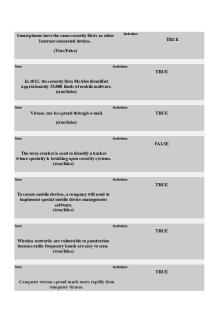
Testbank ch7
- 4 Pages
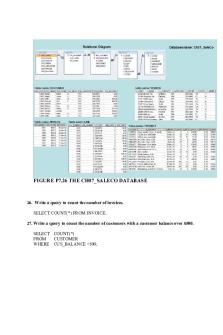
Ch7 - Ch7
- 11 Pages
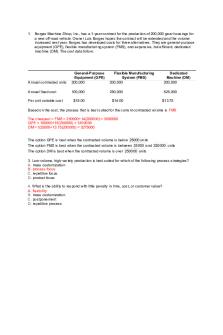
Ch7
- 4 Pages
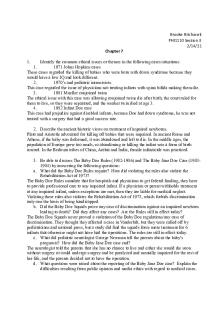
PHI1110 CH7
- 3 Pages
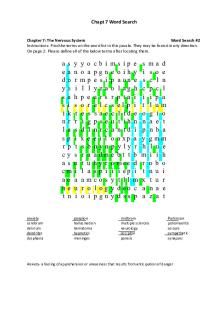
Ch7. Word Search
- 3 Pages

Ch7-practice Questions
- 5 Pages

CH7 review for final
- 2 Pages
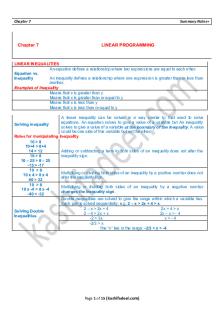
QM-Ch7-Copy - iiiiiiiiiiiiiiiiiiiiii
- 15 Pages

Writing Analytically - Ch7
- 4 Pages

Ch7 - FLIP-FLOPS
- 12 Pages

Chapter 7 - CH7
- 18 Pages

Ch7 - test bank
- 56 Pages

International Finance ch7-9
- 95 Pages

Mishkin solutions ch7
- 6 Pages

CF1 Exercise Ch7 Solution
- 4 Pages

Ch 7 - ch7
- 2 Pages
Popular Institutions
- Tinajero National High School - Annex
- Politeknik Caltex Riau
- Yokohama City University
- SGT University
- University of Al-Qadisiyah
- Divine Word College of Vigan
- Techniek College Rotterdam
- Universidade de Santiago
- Universiti Teknologi MARA Cawangan Johor Kampus Pasir Gudang
- Poltekkes Kemenkes Yogyakarta
- Baguio City National High School
- Colegio san marcos
- preparatoria uno
- Centro de Bachillerato Tecnológico Industrial y de Servicios No. 107
- Dalian Maritime University
- Quang Trung Secondary School
- Colegio Tecnológico en Informática
- Corporación Regional de Educación Superior
- Grupo CEDVA
- Dar Al Uloom University
- Centro de Estudios Preuniversitarios de la Universidad Nacional de Ingeniería
- 上智大学
- Aakash International School, Nuna Majara
- San Felipe Neri Catholic School
- Kang Chiao International School - New Taipei City
- Misamis Occidental National High School
- Institución Educativa Escuela Normal Juan Ladrilleros
- Kolehiyo ng Pantukan
- Batanes State College
- Instituto Continental
- Sekolah Menengah Kejuruan Kesehatan Kaltara (Tarakan)
- Colegio de La Inmaculada Concepcion - Cebu